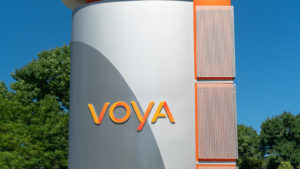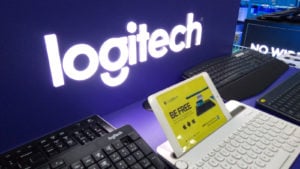When you type “oversold stocks to buy” in your search bar, you get millions of results. One could argue that since the S&P 500 hit an all-time high in early September, there aren’t many stocks that qualify for this screen. However, with the financial woes of China Evergrande Group (OTCMKTS:EGRNF) knocking the global markets for a loop, there are now plenty of oversold stocks to buy.
While there is no official definition of what an oversold stock is or isn’t, many investors rely on the relative strength index (RSI) to delineate between expensive and cheap. If a stock’s RSI goes below 30, it’s considered oversold. Likewise, if it goes above 70, it’s deemed to be overbought.
While not all of these stocks to buy are technically oversold on an RSI basis, all have an RSI under 40 and have plenty of other attributes that keep them in this category:
- Nucor (NYSE:NUE)
- Electronic Arts (NASDAQ:EA)
- VF (NYSE:VFC)
- Estee Lauder (NYSE:EL)
- Voya Financial (NYSE:VOYA)
- Johnson & Johnson (NYSE:JNJ)
- Icahn Enterprises (NASDAQ:IEP)
- National Health Investors (NYSE:NHI)
- Logitech (NASDAQ:LOGI)
- Brookfield Infrastructure (NYSE:BIPC)
Stocks to Buy: Nucor (NUE)

Sector: Basic Materials
RSI: 18.68
In recent days, worries over China’s economy have grown due to Evergrande’s debt issues. As a result, investors in North American steel producers are worried the world’s largest steel consumer will stop buying.
Additionally, China has implemented production curbs to reduce pollution in the country. To top it off, commodity prices for virtually every product have fallen in recent weeks.
However, while China’s regulatory battles have hurt Chinese companies, Nucor should benefit from Biden’s infrastructure plan.
Earlier in September, I recommended NUE stock for several reasons. With a trailing 12-month (TTM) free cash flow (FCF) of $1.76 billion, it has an FCF yield of 6.8%. That puts it right between 4% and 8%, the range I consider to be growth at a reasonable price.
Electronic Arts (EA)

Sector: Video Games
RSI: 15.99
Electronic Arts (EA), a producer of video game franchises such as Madden NFL, FIFA, Battlefield and The Sims, continues to grow its mobile gaming business.
It paid $2.1 billion for Glu Mobile, whose games include MLB Tap Sports Baseball and Kim Kardashian: Hollywood, in April. Five months later, EA acquired Playdemic, a mobile gaming business owned by AT&T (NYSE:T) subsidiary WarnerMedia. Playdemic’s Golf Clash is one of the top mobile games in the U.S. and U.K. It paid $1.4 billion in cash.
Although EA’s FCF yield of 3.5% isn’t cheap, the company has grown its fiscal FCF by 27% over the past two years from $1.43 billion in 2019 to $1.81 billion in 2021.
Down 2.8% over the trailing year, it’s time for EA stock to move back above $140, where it traded earlier in 2021.
Stocks to Buy: VF (VFC)

Sector: Consumer Cyclical
RSI: 19.19
Controversy hit the apparel conglomerate recently when Veronica Wu announced her resignation from the company’s board of directors. Wu had served on the board since March 2019.
While the company says Wu’s resignation from the board had nothing to do with corporate policy, Axios reported that Wu was highly critical of Black Lives Matter in an email dated June 16, 2020.
Although her comments were unfortunate to say the least, I don’t believe they reflect on the entire company. VF has been at the forefront of diversity initiatives for years. Notably, the company has an apprenticeship program designed to increase diversity in the footwear sector.
The company’s four main brands — Vans, The North Face, Timberland and Supreme — make a potent combination. After several years of underperforming, VFC stock is ready to make a comeback.
Estee Lauder (EL)

Sector: Consumer Defensive
RSI: 20.15
Estee Lauder is the world’s leading beauty company. Its four segments — skin care, makeup, fragrance and hair care — generated $16.22 billion in sales in fiscal 2021. That was 11% higher on a constant-currency basis.
Leading the charge was Estee Lauder’s largest sector, skin care. It accounted for 58% of its overall sales. The segment saw sales increase by 25% in 2021.
Skin care operating profits increased by 43% in fiscal 2021 to $3.04 billion. No other segment came anywhere close when it comes to profitable growth in 2021.
In 2022, it expects to grow by 14.5% at the midpoint of its full-year guidance. Organic sales are projected to be 10.5% at the midpoint. Excluding one-time items, it expects earnings per share of $7.30 at the midpoint.
While EL stock is not cheap at 43 times its forward sales, you have to pay more for quality. This is one stock you can’t miss buying on the dip. Very few chances like this come along.
Stocks to Buy: Voya Financial (VOYA)

Sector: Financial Services
RSI: 26.51
I haven’t written about Voya Financial for years. And when I did talk about the company, it was in the context of its Voya Corporate Leaders Trust Fund Class B (NASDAQ:LEXCX). The passively managed grantor trust was created in 1935 and hasn’t changed its holdings since, except for spinoffs or mergers. While it is an interesting concept, it has severely underperformed the index over the past 10 years.
As for Voya itself, it had 14.8 million customers at the end of June with $721 billion in assets under management and administration, generating $7.6 billion in revenue. Approximately 64% of its revenue is from its wealth solutions operating segment, with the remainder split equally amongst its health solutions and investment management businesses.
In 2021, it expects to repurchase $1 billion of its stock. It has returned more than $7.5 billion to shareholders through buybacks and dividends since it went public in May 2013.
VOYA stock has had three significant corrections in the eight years it’s been a public company. So should it fall below $40 in 2022, it would be an absolute steal from a historical perspective.
Johnson & Johnson (JNJ)

Sector: Health Care
RSI: 17.50
Drug company Johnson & Johnson issued a press release on Sept. 21 that said a booster dose of its coronavirus vaccine was 94% protective against symptomatic Covid-19. That makes it as effective as Pfizer’s (NYSE:PFE) and Moderna’s (NASDAQ:MRNA) vaccines.
While it might be too late to benefit from the ongoing fight to protect Americans from Covid-19, the overseas markets are a potential cash cow.
“Sure, some of the (effectiveness) data ex-U.S. are tracking lower than lead mRNAs, however, J&J’s vaccine pricing discipline makes a compelling case for many geographies ex-U.S.,” Evercore ISI analyst Umer Raffat stated in a note to clients.
JNJ stock has barely moved in 2021. It has a year-to-date (YTD) total return of 5.4%, less than half the performance of the entire U.S. market. Based on $22.6 billion in TTM FCF, the stock has an FCF yield of 5.2%, which suggests you are getting growth at a reasonable price.
Stocks to Buy: Icahn Enterprises (IEP)

Sector: Industrials
RSI: 33.6
Carl Icahn’s holding company is one of those sum-of-the-parts situations where investors have to break down the billionaire’s holdings to figure out IEP stock’s value.
The RSI suggests that it’s nearly oversold right now, with its price down about 8% in the past month. Long-term, IEP stock hasn’t been tremendously successful. It’s got a 10-year annualized total return of 11.8%, about 500 basis points less than the entire U.S. market.
However, the one analyst who covers IEP seems to like Icahn’s business. UBS has a “buy” rating and a $70 target for the stock, providing nearly 40% potential upside.
IEP has investments ranging from control positions to small minority investments in eight segments, including energy, automotive, food packaging and real estate.
It probably will take you days to comprehend all of Icahn Enterprises’ holdings fully. But when you do, it will likely have moved back to $70. At $50, it’s a buy.
National Health Investors (NHI)

Sector: Real Estate
RSI: 34.21
National Health Investors is the exact opposite of Carl Icahn’s business in that it’s easy to understand what it does: It owns and invests in seniors’ housing across the entire health care spectrum.
The real estate investment trust (REIT) has been in operation since 1991. Today, it has 236 properties across 34 states. 157 are senior housing, 75 are skilled nursing facilities, three are hospitals and one is a medical office. A total of 35 operating partners run the properties.
Covid-19 has tested all health care businesses, and NHI is no exception.
On Sept. 13, the REIT provided investors with a business update. According to its update, as of the middle of September, it had collected 80.9% of its contractual cash due in the month. Another 4.5% is expected to be collected, and the rest are deferrals for properties where its tenants are struggling.
To strengthen the REIT’s finances, it’s been selling underperforming properties. So far in fiscal 2021, it has completed or announced $220 million in asset sales. Its goal is $250 million to $400 million.
Down 16.6% YTD, NHI is a contrarian play that could end up smelling like roses in 2022 and beyond.
Stocks to Buy: Logitech (LOGI)

Sector: Technology
RSI: 37.77
I’ve always known Logitech for its mice and keyboard peripherals. However, it does so much more. See for yourself.
I recently mentioned the company in an article about Corsair Gaming (NASDAQ:CRSR). I specifically said that Logitech’s FCF yield of 6.9% was 200 basis points better than its smaller competitor.
Logitech flies under the radar for many investors. But in Q1 2021, it saw a 58% increase in sales to $1.31 billion with a 91% increase in non-GAAP earnings per share of $1.22. If the company keeps putting out numbers like this, there’s no question investors will be rewarded for their patience.
It finished June with $1.5 billion in cash and just $40 million in total debt.
In the past three months, LOGI stock has lost approximately 20% of its value. It is well off its 52-week high of $140.17 set in June.
In its Q1 2022 prepared remarks, Logitech said sales for the entire year would be flat to 2021 with a non-GAAP operating income of $825 million at the midpoint of its guidance.
That might not seem significant until you realize sales of $5.3 billion would be 77% higher than in fiscal 2020, just two years ago. Additionally, operating margins in 2022 will still be close to 16%, almost double what they were in 2020.
Buy the dip in LOGI stock.
Brookfield Infrastructure (BIPC)

Sector: Utilities
RSI: 36.41
Any business related to Brookfield Asset Management (NYSE:BAM) is something I can get excited about. There are few capital allocators anywhere in the world that match Bruce Flatt and company.
As its name implies, Brookfield Infrastructure owns infrastructure assets around the world, including utilities in the U.K. and Brazil. However, it is the company’s Brazilian assets that currently generate a big share of its revenue.
On Aug. 25, Canadian pipeline company Inter Pipeline (OTCMKTS:IPPLF) announced that after a lengthy battle with Pembina Pipeline (NYSE:PBA), Brookfield would acquire it for $6.8 billion.
In the six months ended June 30, Brookfield’s funds from operations (FFO) grew by 19% to $825 million, with its utilities business in Brazil and the U.K. accounting for 43% of its cash flow. Its transport unit — which includes railways in the U.S., Europe and elsewhere — chipped in another $335 million in FFO or 40% overall. The company’s midstream (pipelines) and data segments contributed the remainder.
If you believe in infrastructure investing, BIPC stock has to be on your list.
On the date of publication, Will Ashworth did not have (either directly or indirectly) any positions in the securities mentioned in this article. The opinions expressed in this article are those of the writer, subject to the InvestorPlace.com Publishing Guidelines.
Will Ashworth has written about investments full-time since 2008. Publications where he’s appeared include InvestorPlace, The Motley Fool Canada, Investopedia, Kiplinger, and several others in both the U.S. and Canada. He particularly enjoys creating model portfolios that stand the test of time. He lives in Halifax, Nova Scotia.
